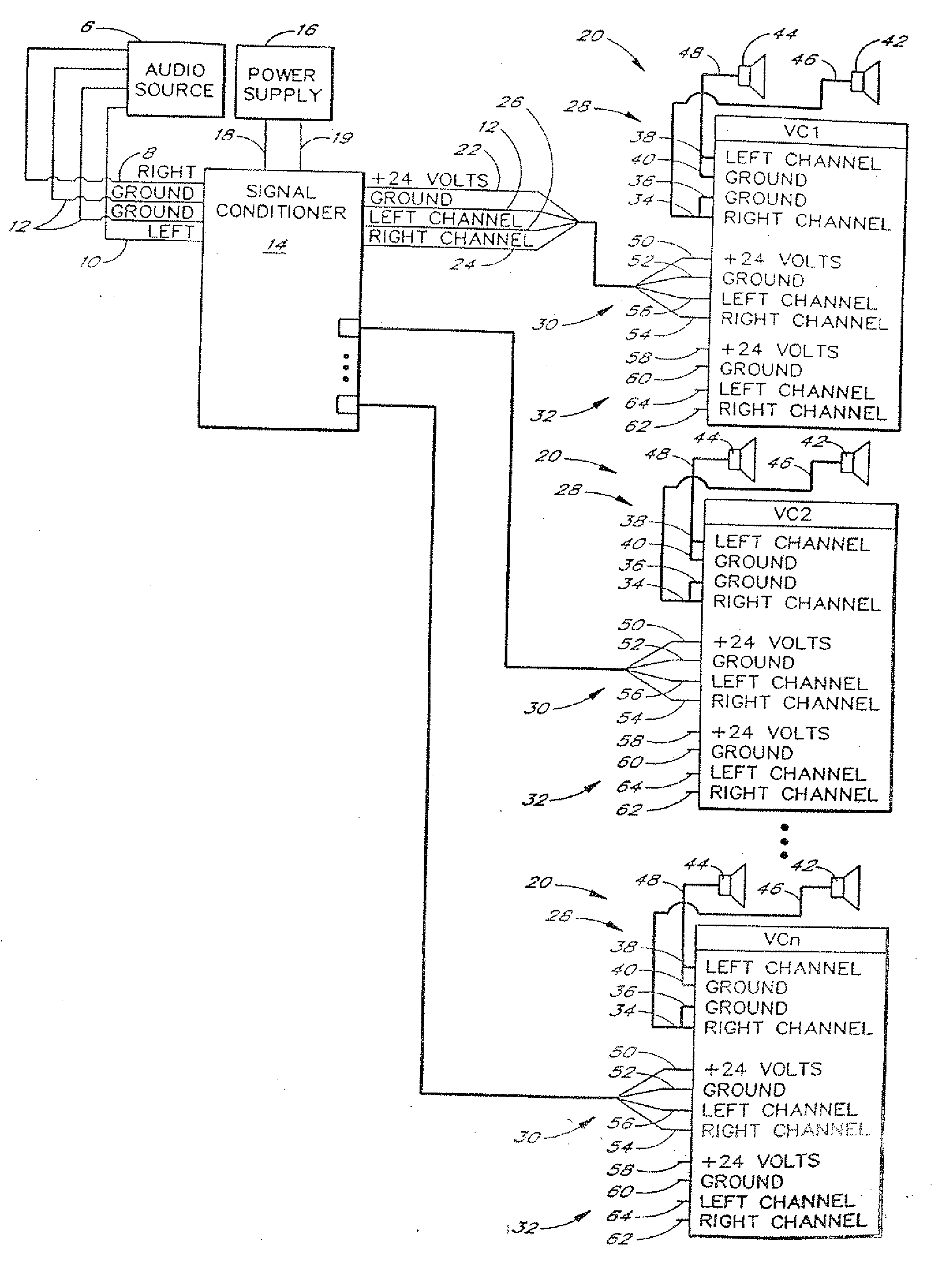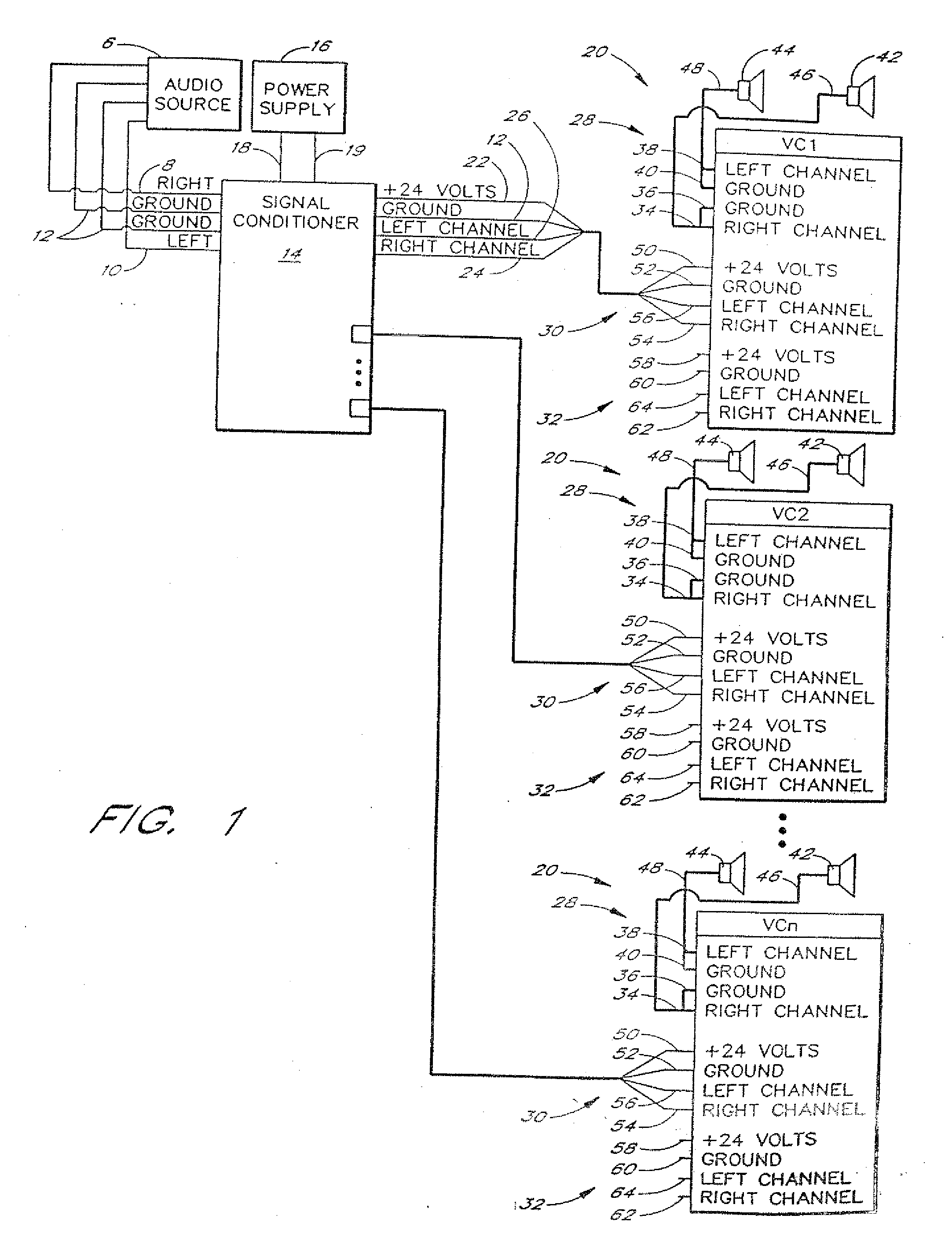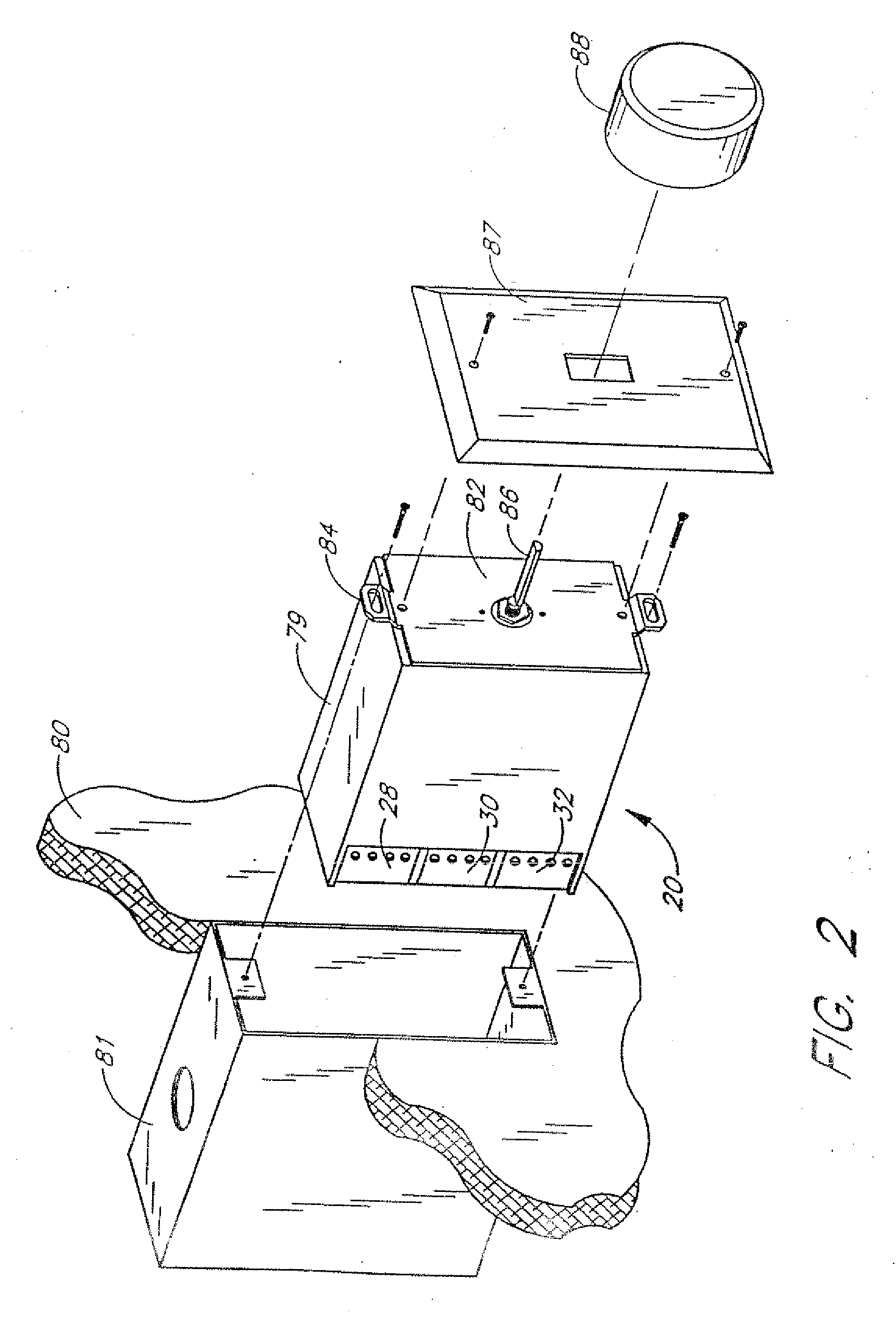Audio distribution system
a distribution system and audio signal technology, applied in the field of audio signal amplification and distribution system, can solve the problems of system cost increase, system limitation or disadvantage, and system noise, and achieve the effects of low resistance, low cost, and low cos
- Summary
- Abstract
- Description
- Claims
- Application Information
AI Technical Summary
Benefits of technology
Problems solved by technology
Method used
Image
Examples
Embodiment Construction
[0046]A description of example embodiments of the invention follows.
[0047]FIG. 1 illustrates the general arrangement and connection of a distributed audio system having features in accordance with one preferred embodiment of the present invention. The system generally comprises an audio source 6 having a right channel signal output line 8 and left channel signal output line 10. Both the right channel 8 and the left channel 10 are referenced to a respective ground 12. The audio source 6 provides an electrical signal representing an audio signal and may further generate a stereo signal representing a variance in the signal between the right channel 8 and the left channel 10. The audio source may comprise any number of suitable audio sources, including, without limitation, a radio tuner / receiver, tape player, phonograph, compact disc player, microphone or similar device. Alternatively, or in addition, a public addressing system (not shown) may integrate with the audio source 6 to provi...
PUM
 Login to View More
Login to View More Abstract
Description
Claims
Application Information
 Login to View More
Login to View More - R&D
- Intellectual Property
- Life Sciences
- Materials
- Tech Scout
- Unparalleled Data Quality
- Higher Quality Content
- 60% Fewer Hallucinations
Browse by: Latest US Patents, China's latest patents, Technical Efficacy Thesaurus, Application Domain, Technology Topic, Popular Technical Reports.
© 2025 PatSnap. All rights reserved.Legal|Privacy policy|Modern Slavery Act Transparency Statement|Sitemap|About US| Contact US: help@patsnap.com



